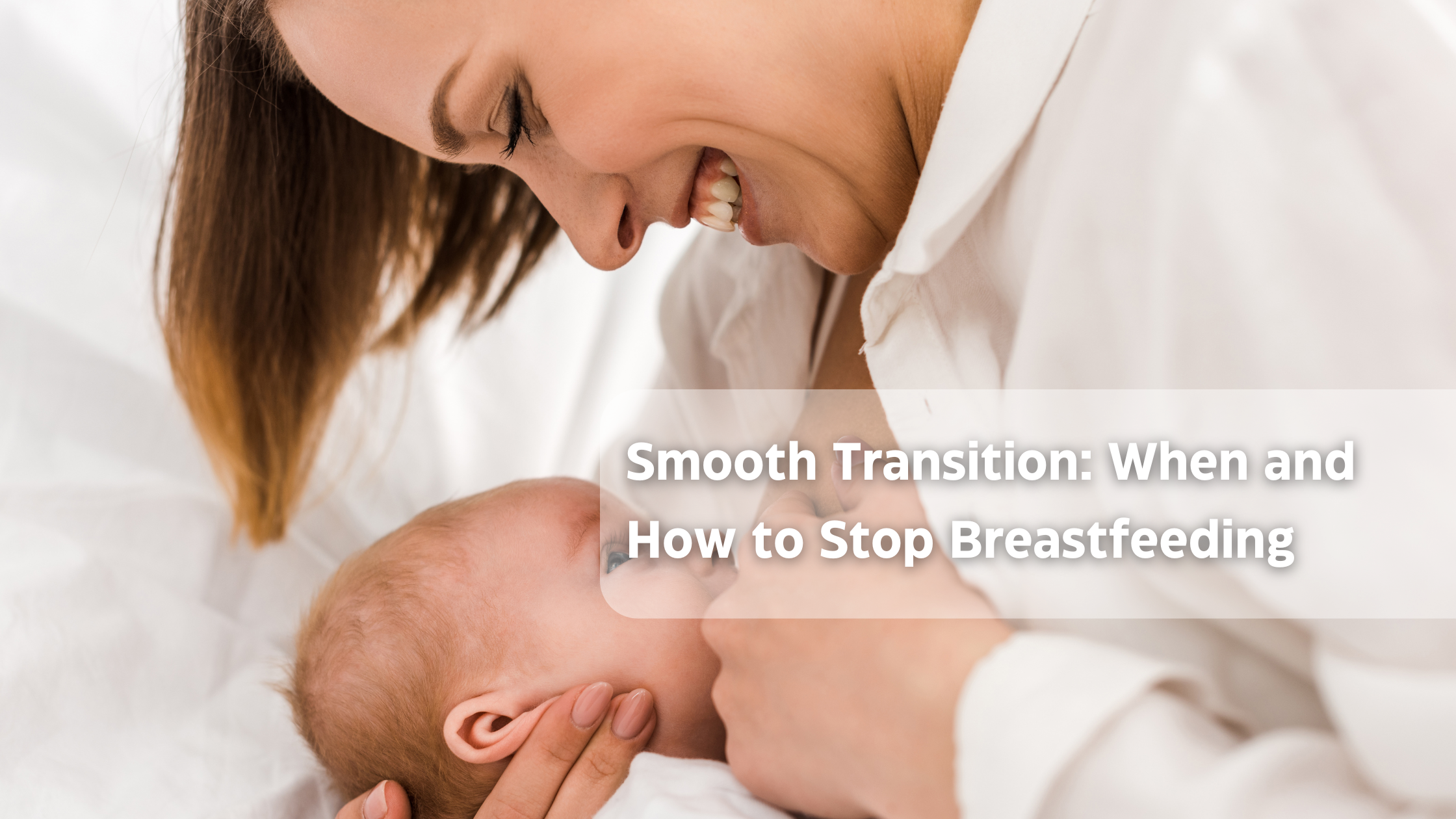Smooth Transition: When and How to Stop Breastfeeding
UNDERSTANDING THE SIGNIFICANCE OF BREASTFEEDING DURATION

THE ROLE OF BREASTFEEDING IN MATERNAL AND CHILD HEALTH
Breastfeeding is crucial for both mothers and child, offering essential nutrients and antibodies that boost the baby’s immune system and promote healthy growth. For mothers, it can reduce the risk of certain cancers and aid in postpartum recovery. The World Health Organization recommends exclusive breastfeeding for the first six months, followed by continued breastfeeding with solid foods until the child is at least two years old. However, the decision to stop breastfeeding is deeply personal and should be made based on each mother and child’s unique circumstances.
FACTORS AFFECTING YOUR DECISION TO STOP
Several factors can influence when you decide to stop breastfeeding. These may include:
1. Your baby's age and developmental stage: The right time to stop breastfeeding often depends on your baby’s age and developmental milestones. Babies typically start eating solid foods around six months, which can complement breastfeeding. As they grow, they may naturally begin to show less interest in breastfeeding.
2. Your physical health and comfort: Your own physical well-being plays a key role in the decision to stop breastfeeding. If you're feeling discomfort, fatigue, or any physical challenges, it might be a sign to begin the weaning process. Ensuring you feel well-rested and comfortable is important for both you and your baby.
3. Work commitments and lifestyle changes: Your work schedule and lifestyle can influence when to stop breastfeeding. If you're returning to work or facing other lifestyle changes, transitioning from breastfeeding to bottle feeding or solid foods may help provide more flexibility and ease in your routine.
4. Your emotional readiness: Emotional readiness is crucial when deciding to stop breastfeeding. You need to feel mentally prepared for the transition, as it can bring up a mix of emotions. Listening to your feelings and ensuring you're ready to take the next step is essential for both your well-being and your baby’s.
STRATEGIES FOR A SMOOTH WEANING PROCESS
Evaluating the Readiness of Your Baby
Signs of readiness may include:
1. Showing interest in solid foods: When your baby starts showing curiosity about the foods you're eating, reaching for your plate, or watching you eat, it’s a sign they may be ready to begin exploring solid foods alongside breastfeeding.
2. Able to sit up and hold their head steady: Babies need to have good head and neck control to safely eat solid foods. This milestone usually happens around 4-6 months and is a good indicator that your baby is ready to begin weaning.
3. Loss of the tongue-thrust reflex: The tongue-thrust reflex, which causes babies to push food out of their mouth, typically disappears around 4-6 months. Once this reflex is gone, your baby can start swallowing solid foods more effectively.
4. Increased appetite after breastfeeding: If your baby seems to be hungrier after breastfeeding, it could indicate that they’re ready for solid foods to complement breast milk. This increased appetite often signals that they need more nutrients than breast milk alone can provide.

Setting Realistic Expectations and Goals
When you're ready to stop breastfeeding, set realistic goals and remember that weaning is a gradual process. Start by replacing one breastfeeding session with a bottle of solid food and slowly increase this over time to allow both you and your baby to adjust. This method helps prevent engorgement and discomfort. Be patient and flexible with yourself and your baby, as the transition might not go exactly as planned and that's okay.
Managing the Emotional Implications
Coping with the Changes in Your Milestone Journey
Stopping breastfeeding is a major milestone that can bring a mix of emotions, including relief, sadness, or even guilt. These feelings are completely normal. Remember, ending breastfeeding doesn't end the bond with your child there are plenty of ways to stay close, like cuddling, reading, or singing together. If you're feeling emotionally challenged during this transition, seek support from your partner, friends, or a lactation consultant for advice and reassurance.
Balancing Emotional Wellbeing with the Weaning Process
As you go through the weaning process, prioritize your emotional well-being. The transition can be tough for both you and your baby, so be kind to yourself and acknowledge your feelings. If you're experiencing mood swings or depression, don't hesitate to reach out to your healthcare provider for support. Taking care of yourself, getting enough rest, eating well, and doing things you enjoy is just as important as caring for your baby. This balance will help you manage the emotional challenges of weaning more effectively.
Fostering Positive Outcomes for Mothers and Infants
The end of breastfeeding marks a new chapter in your relationship with your child, filled with growth and new experiences. Focus on the positive your baby is developing new skills, and you're gaining more freedom in your daily routine. Celebrate these milestones and continue nurturing your bond through physical and emotional connections. Remember, your worth as a mother isn't defined by breastfeeding. What matters most is the love and care you provide. Embrace this transition with confidence, knowing you're making the best decision for your family.

